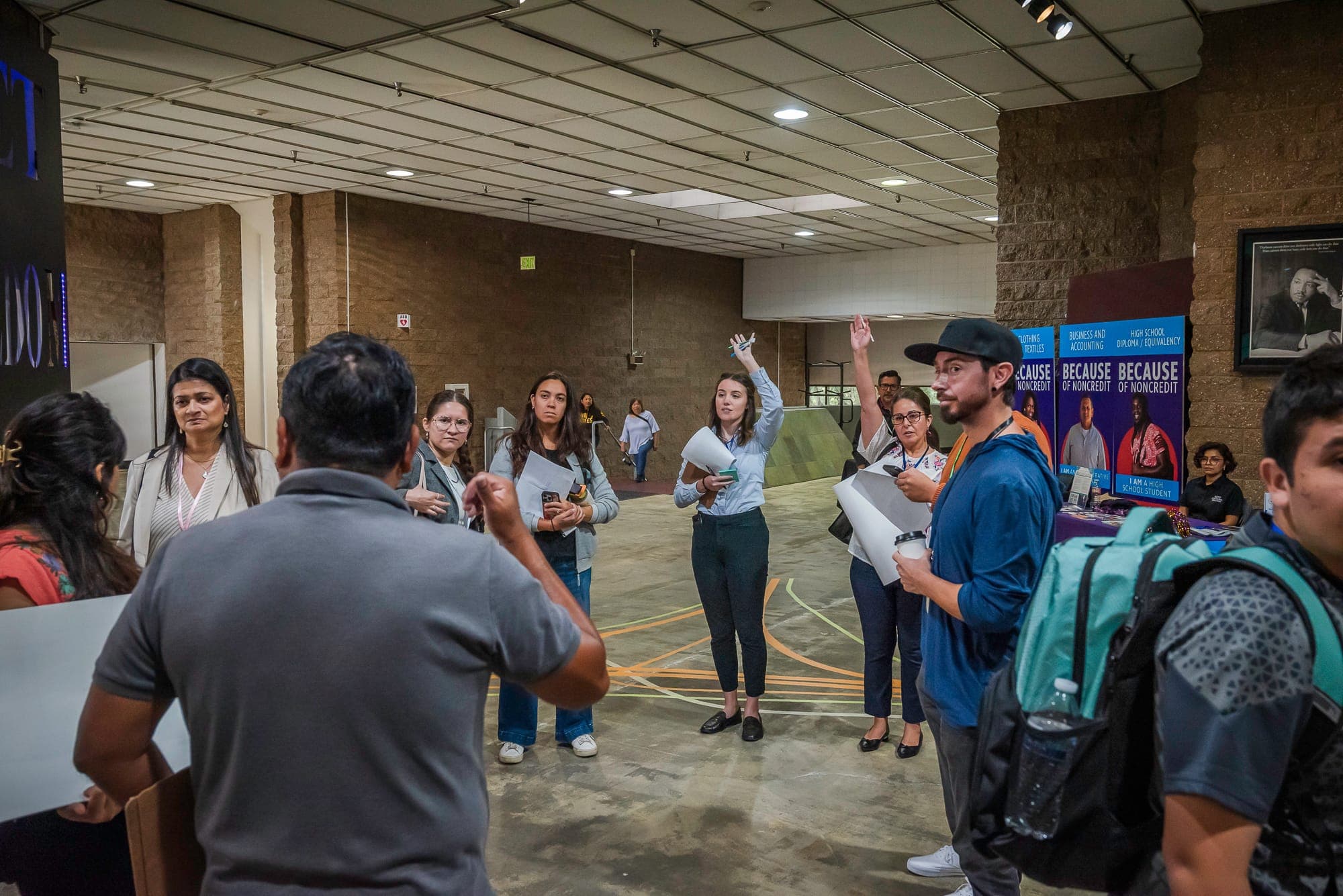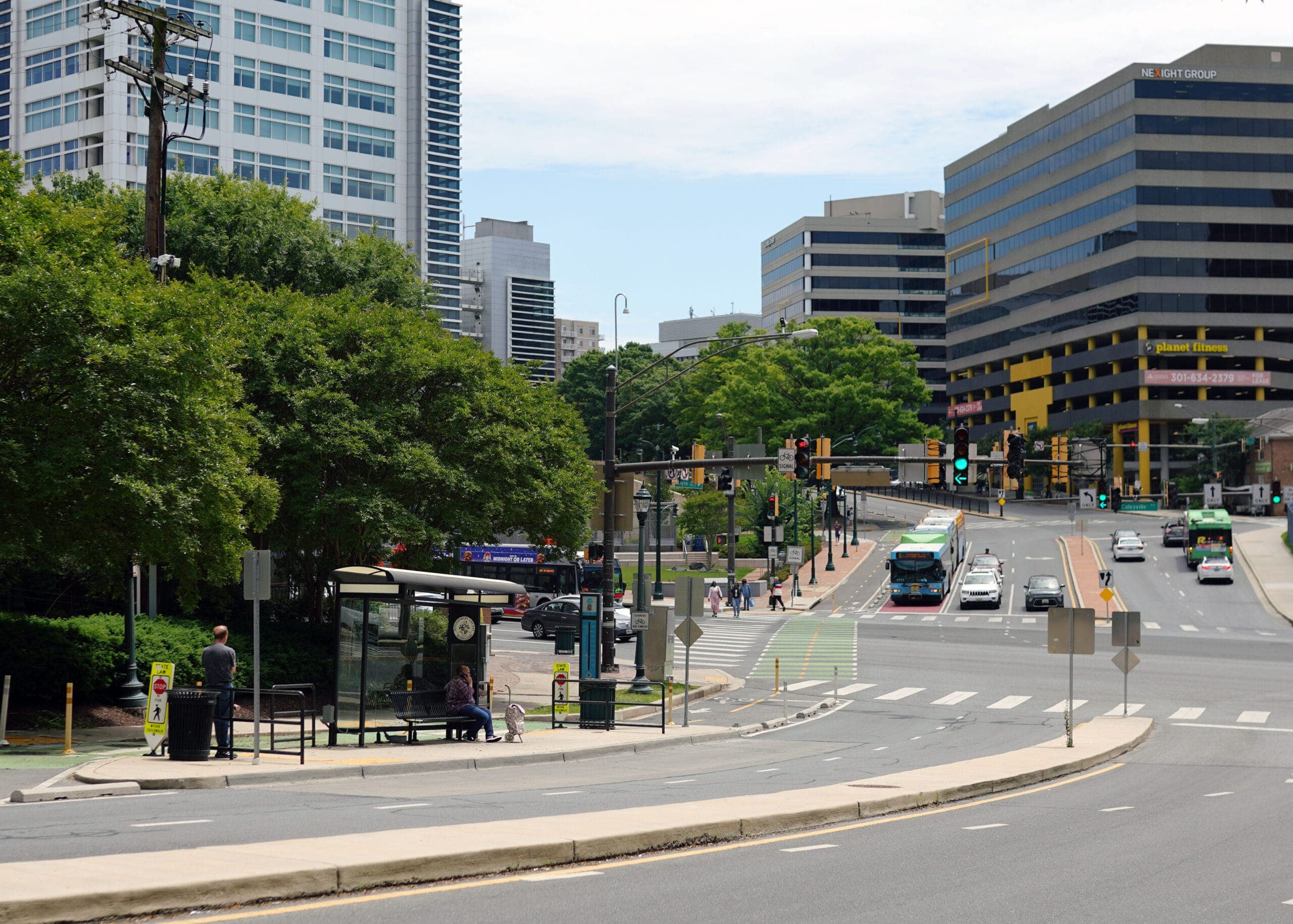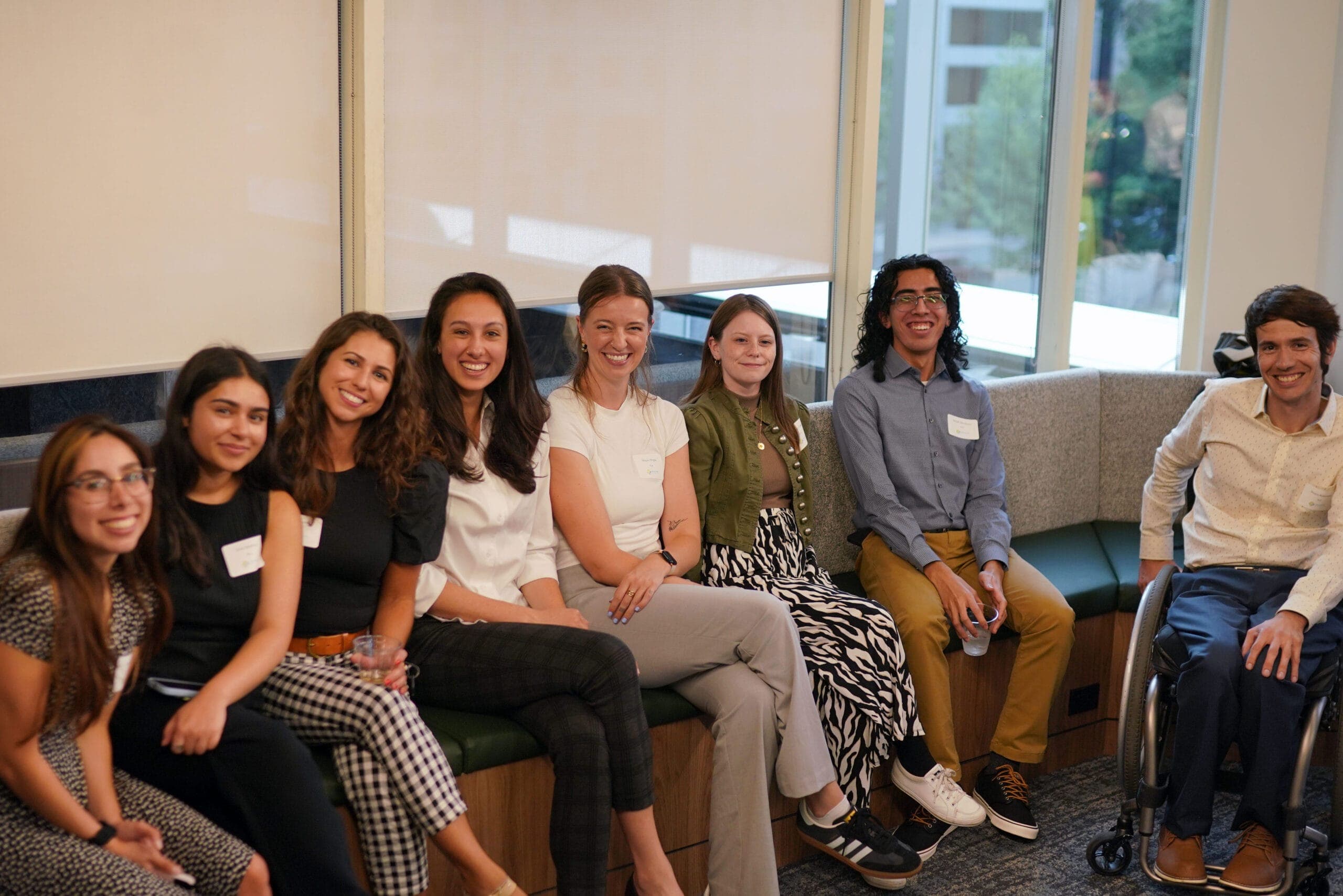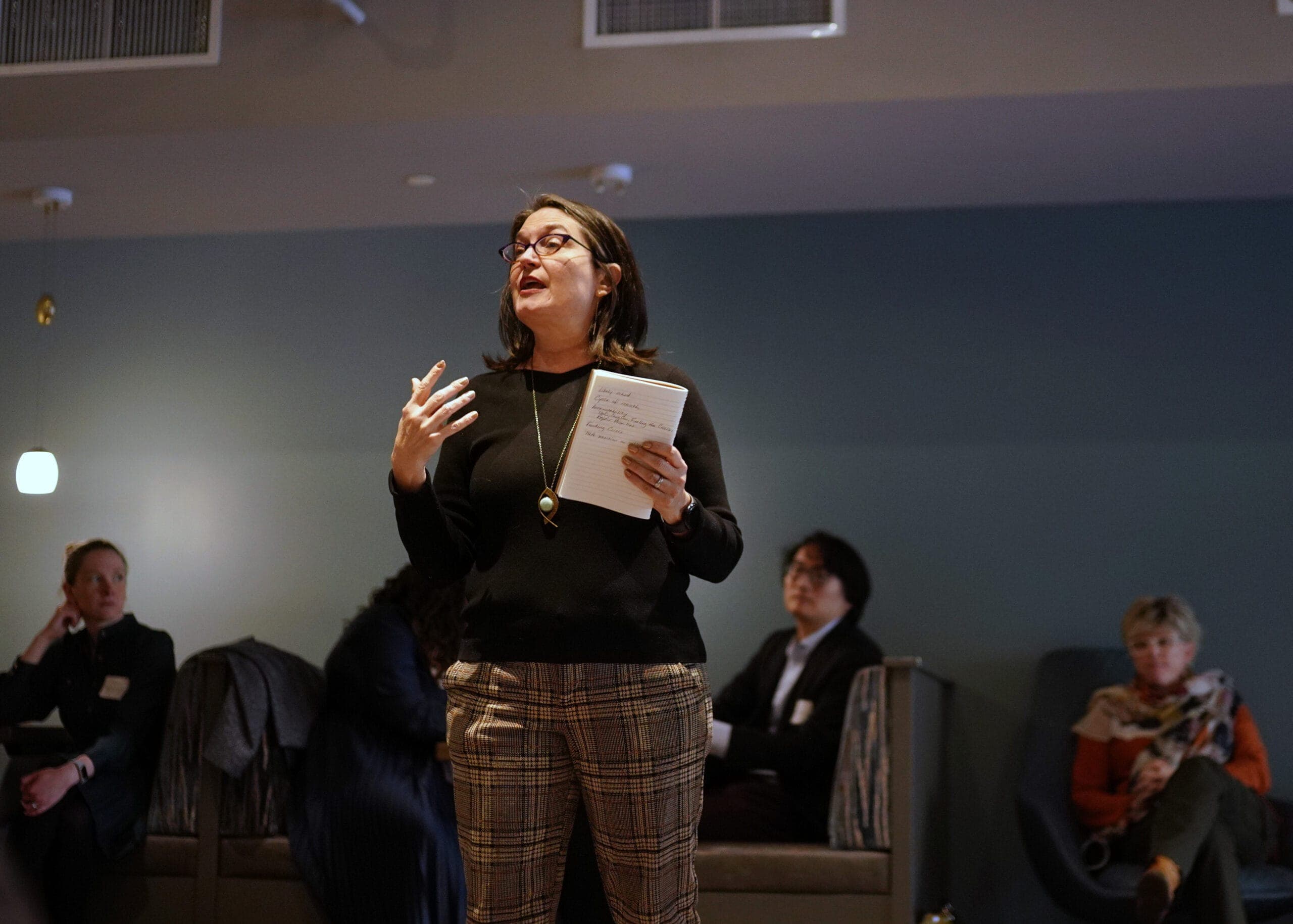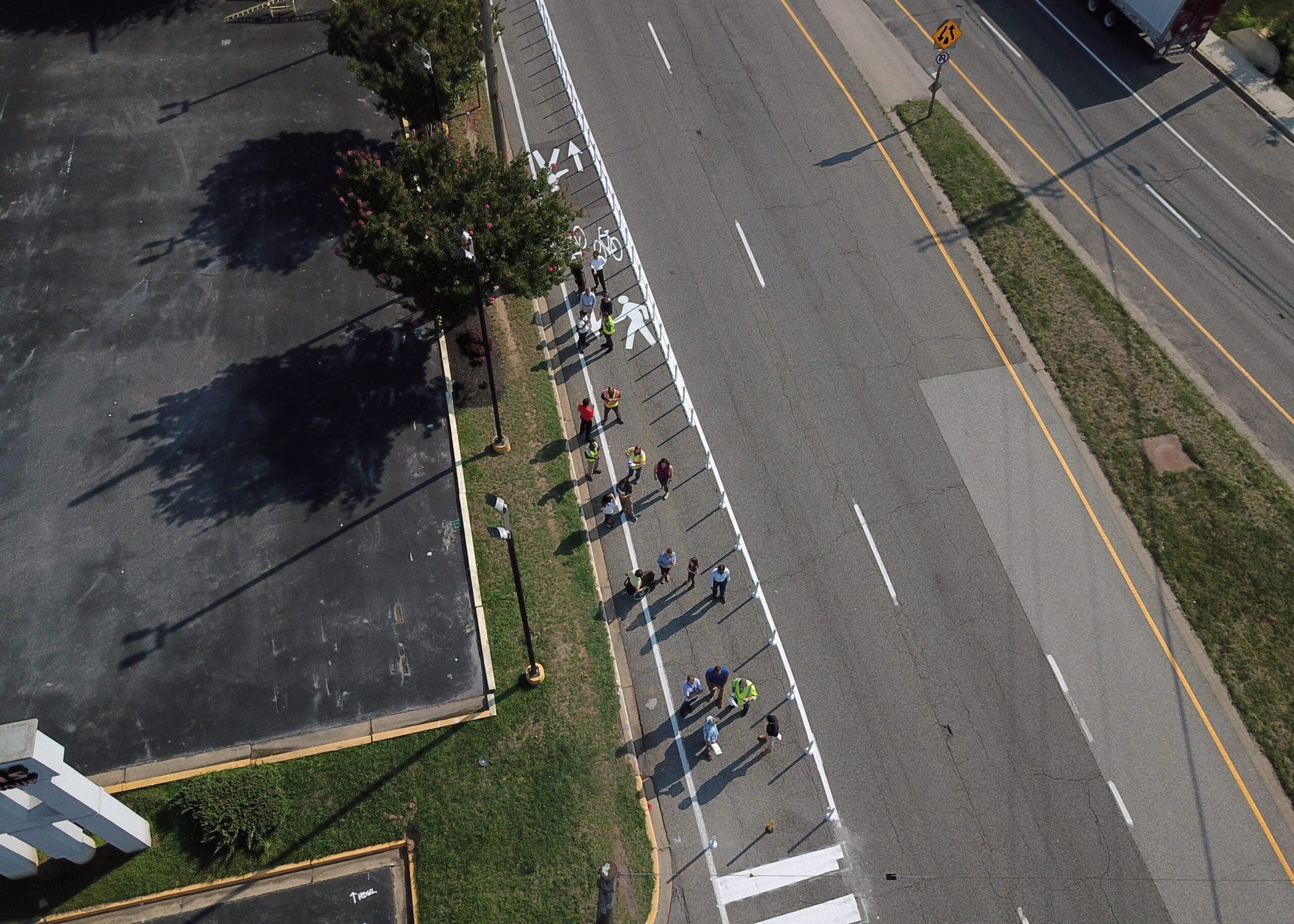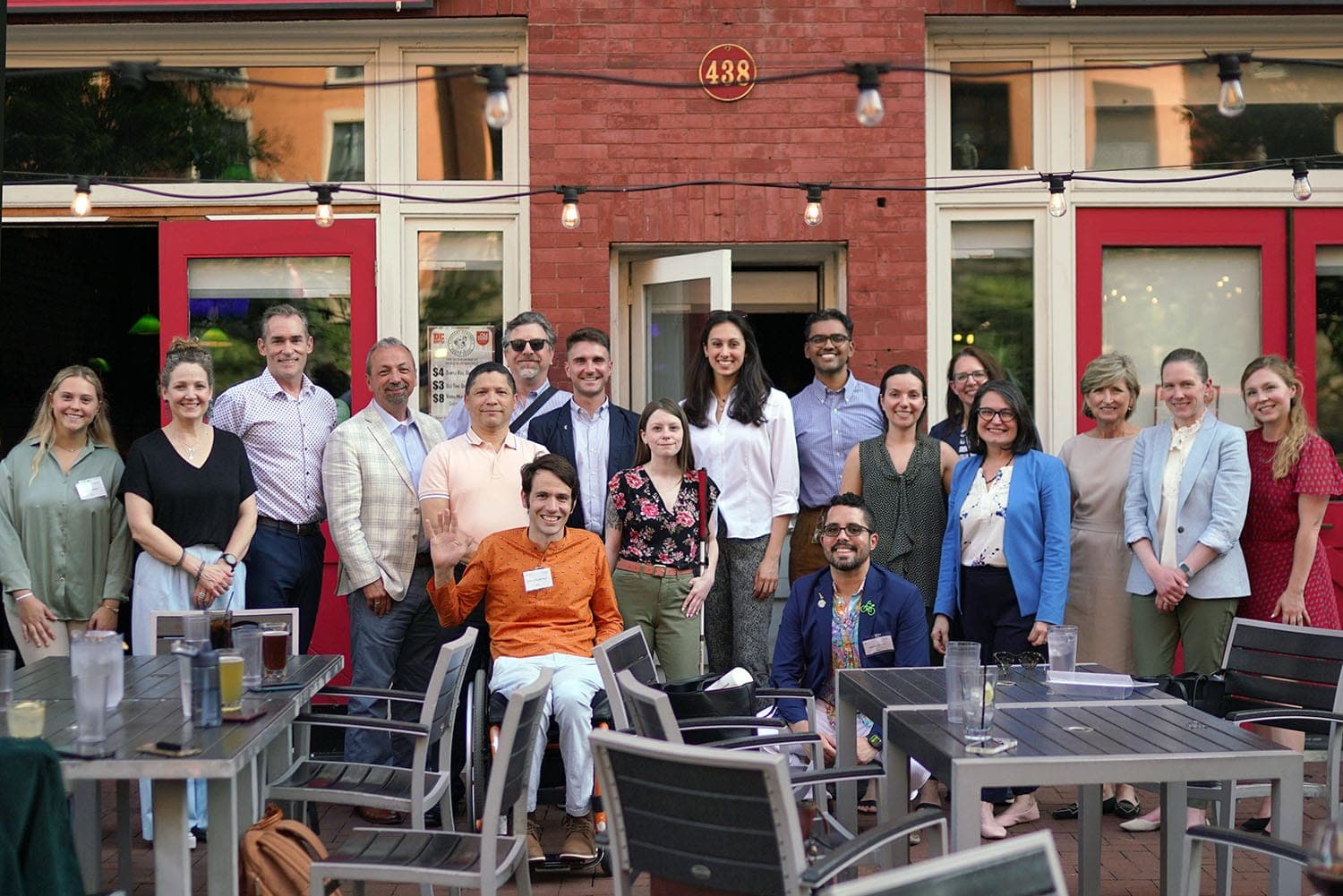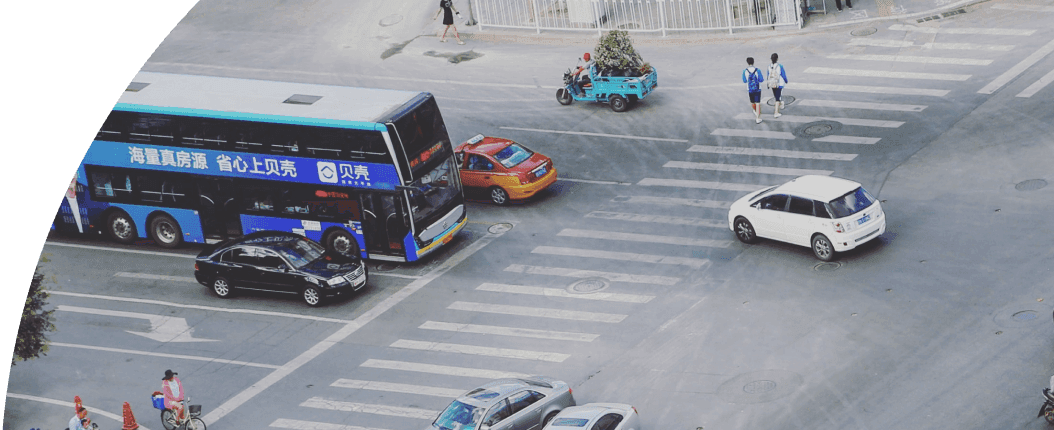
News
By Raveena John, July 30, 2025
Smart Growth America brought the Complete Streets Leadership Academy to Kentucky in 2025. This program built partnerships between Bowling Green, Morehead, and Winchester and the Kentucky Transportation Cabinet (KYTC) to design quick-build demonstration projects on state-owned roads. Our new report details how each city worked with KYTC districts, community members, and regional staff to develop processes for conducting quick builds in Kentucky.
Background
Quick-build demonstration projects are temporary installations that can be used to test safer road designs, grow partnerships, and build momentum for long-term change. With state-owned routes being the most deadly to people walking, coordinated efforts between local jurisdictions and states are key to improving safety. Building partnerships and processes through quick builds is an important strategy in this effort.
This Complete Streets Leadership Academy (CSLA) built on KYTC’s ongoing Complete Streets work, as the state’s current Complete Streets Program includes a state-wide policy and a guidance manual, both adopted in 2022. Soon after the policy was passed, KYTC conducted a series of trainings for district staff and local jurisdictions to learn about the program, which introduced some of the CSLA participants to Complete Streets. This CSLA was also a homecoming for SGA: the first 2018 cohort included Lexington, KY.
The Academy combined virtual workshops and an in-person convening for participants to learn about design strategies as well as how to build relationships and support each other’s projects. These trainings supported teams in developing a process to design, install, and evaluate quick builds, with the aim of KYTC and the local teams being able to continue these partnerships and replicate the process elsewhere in the future. Our new report describes the processes and observations throughout the KY CSLA, as well as ideas for how to apply lessons from the program to future quick builds on state routes, in Kentucky and beyond.
Key takeaways
1. Quick-build demonstration projects can be more successfully implemented when teams have a strong understanding of Complete Streets and related topics. This was the first quick build that all participants had worked on, but prior familiarity with Complete Streets varied across the cities and the KYTC district partners. The different starting points for participants led to each team pursuing different goals in their projects.
2. Existing levels of coordination influence the scope of a quick-build project. Bowling Green’s strong existing partnerships allowed the team to develop two projects. In Morehead and Winchester, the team leads worked to bring people in and build support for more Complete Streets and quick-build projects in the future.
3. The size and capacity of a community greatly impact how a local team can participate in a quick-build project. KYTC was eager to work with smaller jurisdictions in this program, to learn about what support and resources they would need to do this work. State DOTs have a large impact in small communities, and lessons learned from this program can be applied across Kentucky and beyond.
4. Temporary quick-build projects can lead to lasting change. By selecting locations and designing projects likely to receive broad support for future projects or using the focus on the project sites to install small permanent improvements, like curb ramps and even sidewalks, these quick builds were designed with the long term in mind.
Find a summary of the report here.
Case studies
Bowling Green
The Bowling Green team’s goal for this program was to try their first quick-build project. Many members of the team were eager to try this approach to address known safety concerns and to build momentum for more quick builds in the future. The team’s strong internal coordination was key to the successful process of this group and the large project scope they were able to pursue: one project at the intersection of Smallhouse Road and KY-231/Scottsville Road and another on KY-231/Morgantown Road. The Smallhouse Rd project will update crossings to a higher safety standard and the Morgantown Rd project will turn the existing shoulder into a protected multi-use path to bridge a gap in the sidewalk, in anticipation of a future permanent project. Read the case study here >>
Morehead
The Morehead team’s goals in this project were to improve safety for people crossing US 60 and build the relationships needed to do so. Navigating different levels of buy-in while building relationships around the shared goal of safety led to a project that tests a temporary change for a turn radius on US 60 and Bridge St and also additional safety improvements along Bridge St. The team is planning on making adjustments to the Bridge St component of the installation to respond to community input, but hopes to keep the project in as long as possible to maintain the safety benefits. The team made decisions throughout the project with an eye on their shared long-term goals, to continue to work together for more robust Complete Streets work in the city and the district. Read the case study here >>
Winchester
The Winchester team’s goals were to improve safety through a demonstration project, learn and improve on the processes to do so, and build support for this work, especially from elected officials, city staff, and the public. The team selected KY-627/Boone Avenue and College Street as the project site, a wide street in a residential neighborhood with heavy truck traffic, though it’s a primary route to the nearby schools. The team gathered public input on the project at a meeting near the site, which emphasized a long-standing need for safety improvements on Boone Ave. The project aims to improve safety at the intersection by slowing speeds and marking space through crosswalks, bumpouts, and bike lanes, and the momentum around this site has already led to the city installing permanent curb ramps. Read the case study here >>
These projects are scheduled for installation in late summer 2025, so stay tuned to learn more about the quick-build project outcomes!
This publication was made possible by the Centers for Disease Control and Prevention (CDC) (Cooperative Agreement CDC-RFA-PW-24-0080). Its contents are solely the responsibility of the authors and do not necessarily represent the official views of CDC. These efforts are part of the CDC’s Active People, Healthy NationSM Initiative that is working to help 27 million Americans become more physically active by 2027.
Related News

© 2025 Smart Growth America. All rights reserved
Site By3Lane Marketing
